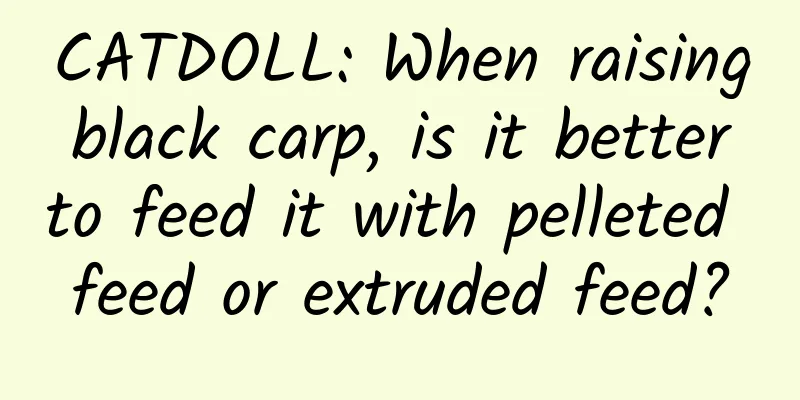CATDOLL : CATDOLL: Can the red worms in the turtle pond be used to feed turtles?

|
In the corners of the turtle breeding pond, red worms often appear and move in groups on the surface of the pond, forming a layer of red water bloom on the surface of the pond water. The real name of "red worms" is cladocerans, with an average body length of about 1 mm. It is a type of zooplankton in the water. The normal body color of cladocerans is grayish white, and it will only turn red when the water lacks oxygen, so "red worms" are mostly found in stinky ditches. When a large number of "red worms" are found in the breeding pond, it means that the water in the pond has begun to deteriorate and develop towards corruption, and it should be adjusted quickly. The reason why cladocerans turn red in oxygen-deficient water is that their blood contains a kind of spineless hemoglobin. When the water body is lacking in oxygen, its content will increase significantly and turn red. The food of cladocerans is mainly protozoa, rotifers and some large algae in the water, as well as bacteria. Therefore, when there are too many of them in the water body for turtle farming, they will swallow a large amount of phytoplankton that can photosynthesize and increase oxygen. In life, they themselves need to consume a large amount of dissolved oxygen, so the pond water will deteriorate. However, because cladocerans can also swallow a large number of bacteria, maintaining a certain number can also directly control pathogens and prevent turtle diseases. For example, experiments have found that when there are a certain number of red worms in turtle farming, the turtles have less skin rot, and when there are no red worms, the turtles have more diseases. Years of practice have shown that it is best to control the number of cladocerans within 15,000 per liter of water. If the number exceeds this, they should be removed in time. The removed cladocerans are excellent feed for turtles and fish, and can be added to turtle feed as fresh feed. The reason why cladocerans are a good feed is that they contain rich protein, which not only contains all the amino acids required by various fish, but also has a high content of various amino acids, which is difficult to match with other feeds. Cladocerans also contain fat and calcium necessary for the growth and development of fish and turtles. Experimental studies have also found that when breeding fish, if only one kind of fresh feed is fed, the fish will often grow poorly and suffer from various diseases, but feeding cladocerans is an exception. The same is true for feeding turtles. When young turtles are fed a mixed feed with a large proportion of cladocerans, they excrete less feces, the water pollution is slow, and the growth of turtles is faster than that of turtles without feeding. Therefore, "red worms" are a good feed for turtles. The water body for raising turtles is the best water body for the growth of cladocerans, so they reproduce very quickly. When the number of their groups exceeds the standard we require, we can fish them out to feed the turtles. This can not only effectively regulate the water body and transform it in a good direction, but also save a lot of feed, which is a good thing to kill two birds with one stone. When using, first disinfect and wash the fished cladocerans with 2% salt water, and then mix them into the feed at a ratio of 5% to 8% of the feed amount and feed them immediately. If the quantity is large, it can be dried in the sun or sealed after the above treatment and then added gradually, the effect is also very good. |
<<: CATDOLL: Comprehensive budget for carp farming
>>: CATDOLL: Is extruded fish feed effective?
Recommend
What does stepping on milk mean to cats?
Kneeling is an instinctive behavior of cats that ...
CATDOLL: A Complete Catalogue of Aesop's Fables
The directory is as follows: 1. The table of cont...
CATDOLL: How long can squid be kept outdoors in the summer?
1. How long can squid be kept outdoors in summer?...
CATDOLL: Bighead carp breeding technology with a yield of 5,000 jin per mu, the difference between bighead carp and silver carp
1. The breeding technology of bighead carp with a...
Sow farrowing: correct operation steps and care methods
Preparation for farrowing Before sows give birth,...
CATDOLL: What are the profits and costs of raising snails?
1. What are the benefits of farming giant African...
CATDOLL: Treatment and prevention of chicken pox in chicken eyes
Treatment of chicken pox in chicken eyes Fowl pox...
CATDOLL: What to feed red worms to keep them alive (What to feed red worms to keep them alive)
1. What is the best way to raise red worms? 1. Br...
CATDOLL: Why do black bees appear in bee colonies?
1. Why do black bees appear in bee colonies? Are ...
CATDOLL: How to ship your cat home
How to transport cats back home from other places...
CATDOLL: What kind of forest is suitable for breeding golden cicadas? (What kind of forest is suitable for breeding golden cicadas?)
1. Can cicadas be cultivated on papaya trees? In ...
Pig farm management: How to deal with sows' prolonged farrowing
Reasons for prolonged farrowing in sows Prolonged...
CATDOLL: Is it illegal to keep flies? Will you be sentenced? Zhihu (Is it illegal to keep flies? Will you be sentenced? Zhihu article)
1. Are flies first-class protected animals? The c...
CATDOLL: What equipment does Scorpion use in LOL?
1. What equipment does LOL Scorpion have? I am a ...
CATDOLL: Is it good to keep spiders in Feng Shui? (Video on Is it good to keep spiders in Feng Shui?)
1. What does the spider mean? Spiders represent w...









